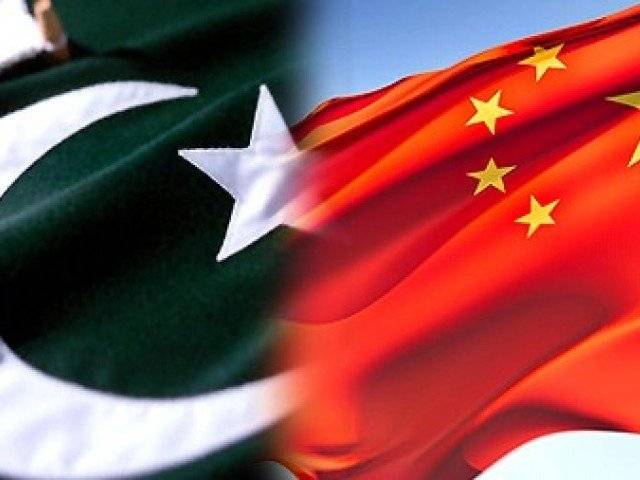LAHORE - By the end of the current year, Sino-Pak cooperation in various fields, including defence production, would touch new peaks. Pakistan would enter the satellite race by launching two satellites under the National Satellite Development Programme (NSDP) and the Remote Sensing Satellite System (RSSS) by the end of 2011. With the launching of the satellites in collaboration with Chinese, Pakistan would reap immense economic benefits. The satellite under NSDP is named PakSat-1R, while the RSSS satellite will be multi-purpose to monitor climatic changes, sound earthquake advance warning and track enemy aircraft in the skies. The communication satellites chief contractor the China Great Wall Industry Corporation (CGWIC) has said that Long March 3B rocket will be used to put the latter satellite into the orbit and it would be launched from the Xichang Satellite Launch Centre in the southwestern Sichuan Province of China. A Memorandum of Understanding (MoU) between the Pakistan Space and Upper Atmosphere Research Commission and the China Great Wall Industry Corporation has been signed to provide cooperation on the RSSS programme. Pakistan would be able to gather its independent satellite earth analysis. A panel of 100 Chinese scientists is working for the upgrade of the existing satellite system in Pakistan. At present, the two countries have jointly produced the most advanced weapons systems, including JF-17 fighter aircraft and F-22P frigates. China has already built three frigates (warships) for Pakistan, which have since been handed over to the Pak Navy. All of them are now part of the Naval fleet. China has also transferred technology to the Karachi Shipyard where the fourth warship is at the final stages of completion. A batch of 40 F-17 Thunder aircraft already has been delivered to the Pakistan Air Force while work on the second batch is at various stages of completion and more aircraft would be delivered to the PAF by the end of this year. This has enhanced PAFs capability to effectively defend its airspace against any enemy. In addition to this, Pakistan is independently making spare parts for the aircraft at Kamra Rebuild Factory. Certain analysis underscore Pakistans inclination to China for its national defence requirements, since heavy reliance on the United States and other Western powers has proven to be counter-productive. It has rather let Pakistan down in many ways. China has lately expressed increasing willingness to offer all-out help to Pakistan in all spheres, including defence. What China has done in the past, what it is doing at present and what it can do for us in future, needs no elaboration. Be this Pakistans nuclear power plants, missile production, joint venture of F-17 Thunder fighter jets, warships, communication satellites and dozens of other areas, China has stood its ground in providing all-out cooperation in the face of international pressure, more often from India and the United States. In view of the emerging geopolitical scenario, Pakistan should shun reluctance in changing its course decisively towards Beijing as a hub to seek transfer of technology in all major industries of defence production, since hoping a delivery of the same from American and Western suppliers would continue to remain a wild goose chase. There, of course, are times when the worst of subservient need to realign policies in view of national interest. The current could well be that era for Pakistan as all the tall sacrifices the country has been making in the war on terror, have been disdainfully shrugged off by the American administration. Not only that, the country has been a newfound scapegoat for all the wrongs on the part of the allied forces in Afghanistan. Hard is to overlook the history of betrayal by the successive American administrations. Pakistan was denied F-16s supply in the 1980s despite upfront payment. The delivery didnt come through for ages; and the eventual refunding in kind, to add salt. The country had also been under protracted US sanctions, with the ban on purchase of arms and ammunition for decades. Lets not go as far back as the SEATO and CENTO era.
Wednesday, November 20, 2024
China to help launch two satellite systems by year-end

Justice Ayesha Malik removed from May 9 military trials bench
6:22 PM | November 20, 2024
Court adjourns 190m pound corruption case against PTI founder, Bushra Bibi
6:13 PM | November 20, 2024
PPP demands PAC chairmanship as leadership deadlock persists
5:47 PM | November 20, 2024
MDCAT 2024 retake scheduled for December 8 in Sindh
4:57 PM | November 20, 2024
Marriyum Aurangzeb urges PTI to hold protests in Khyber Pakhtunkhwa
4:53 PM | November 20, 2024
-
Hunger crisis to increase in South Sudan, warns UN
-
Hunger crisis to increase in South Sudan, warns UN
-
Pakistan’s judiciary champions climate justice at COP29 in Baku
-
Punjab struggles with persistent smog as Met Office forecast rainfall
-
Punjab residents face escalating smog crisis as pollution levels soar across country
-
Qatar says Hamas 'no longer welcome' in Gulf state
Digital Stagnation
November 20, 2024
Xi’s Red Lines
November 20, 2024
Last Call
November 20, 2024
Sindh & Indus
November 19, 2024
Another US Escalation
November 19, 2024
Tackle Corruption Within School Boards
November 20, 2024
To Be Opportunistic
November 20, 2024
Democratic Backsliding
November 20, 2024
Empowering Tharparkar through Skills Development
November 20, 2024
Why Not Use AI to Address Climate Change?
November 19, 2024
ePaper - Nawaiwaqt
Nawaiwaqt Group | Copyright © 2024





